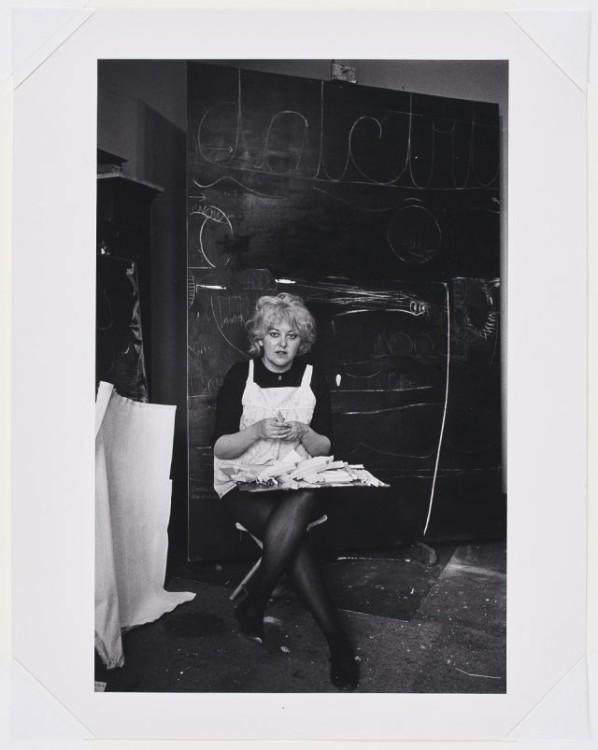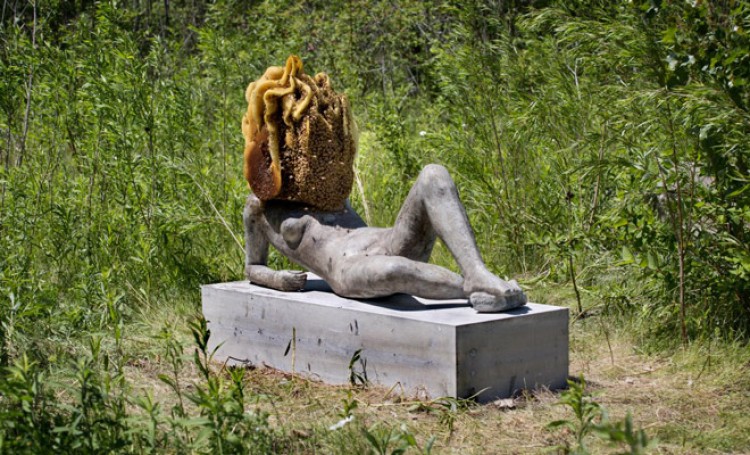The Science in Art: Safe, Safer, Safest
by Elizabeth Carroll, Collections Care Assistant

Conservation of fine art can be much more rigorous than often expected. Conservators must be highly skilled in fine art techniques to be able to match the delicate brushstrokes of an 18th-century landscape, and they must also be inquisitive scientists, aware of any chemical reactions that may occur as they mix solvents, and monitor the gallery's environment. Scientific research and testing is integral to conservation as it helps conservators know what materials to use, what may be happening to an item as its appearance or structure changes, and how to prevent or slow the deterioration of artwork.
This summer, I have the pleasure of working as Collections Care Assistant at the AGO researching topics in preventative conservation. Environmental factors and tools can play a large role in conservation. Light, vibration, temperature, humidity, and visitor’s sticky fingers are just a few of the many agents of deterioration that preventative conservation aims to manage. As a Master of Information student focusing on Archives, I’ve become quite interested in preventative ways to help preserve artifacts and records. If we can control and reduce potential damages to the art, the art can remain on display longer, and conservators will not have to treat the object as often. The object, as a cultural artifact, will also be available longer for the enjoyment of future visitors.
Gloves: The Great Debate
A standard in preventative conservation is using gloves to handle objects. Our hands contain oils that can damage an object, change its colour and degrade its surface. Cotton gloves are the most recognizable tool, yet they are not often used at the AGO. Cotton fibres may catch and tear the art being handled, and the glove itself does not create a complete barrier between the work of art and the oils in one’s hand. Instead, nitrile gloves are often used. Nitrile gloves have become the standard in the conservation community because they create a stronger barrier between the wearer’s skin and the object being handled. They are tear resistant and, ideally, will not leave any residue on the object. Nitrile gloves also offer the user a better sense of touch, which allows for safer handling. Gloves are a very important tool in art conservation, and are used in almost every situation.
Recently, however, conservators have begun to debate whether nitrile gloves are actually safe to use. Some believe that these gloves are causing metals in art to tarnish. This is very concerning as art conservators are tasked with restoring, and preserving art, not contributing to its deterioration. To help improve our knowledge on nitrile gloves, I was asked to research the topic. I found that there are many opinions and possible conclusions based on my survey of the current literature. One theory maintains that traces of sulphur left over from the manufacturing process can still be found on the glove, causing the object to tarnish. Another conclusion based on the literary research is that conservation-safe nitrile gloves are only those labeled accelerant-free, as this type should not contain sulphur. Other avenues in the research suggest that manufacturers have changed their glove formulas, thus gloves that were once safe are no longer advisable to use.

This dilemma shows that everything that comes into contact with an artifact must be considered and tested for its potential to harm the object, and that constant re-evaluation of products and materials used in conjunction with artwork is a wise approach. Even the seemingly small attributes of a glove can have a large impact on the object being handled and thus careful research is important in all aspects of conservation.
The next step in research is testing theories to see if the hypothesis made through literary reviews hold up. These nitrile gloves also caught the attention of Lisa Imamura, a Master of Art Conservation student at Queen’s University. Imamura began experimenting with commonly used nitrile gloves to see if the hypothesis she made after literary research would be supported. One test method she used was the Oddy test. This is an accelerated corrosion test that looks for corrosive agents in a given material. Small coupons of copper, silver, and lead (Imamura replaced her lead sample with solid sterling silver) are placed in individual air tight containers with a bit of water and whatever material that needs to be tested. The containers are heated to accelerate chemical reactions, reducing the wait time of the experiment. If a metal coupon tarnishes or corrodes, conservators know that the tested object has reacted to the sample. Experiments like Imamura’s can have a significant impact on material and product choices for preventive conservation care.
Though literature research and test results can help make an informed decision, scientifically testing each product or material and their potential applications improves our understanding of the agents of deterioration and their impact on artwork. A seemingly simple tool like a glove can have a lasting negative impact on an object. Conservators must look at all aspects of their work, including the small tools and materials they use that may come into contact with artwork under their care.
Signature Partner of the AGO’s Conservation Program
Signature Partner of the AGO’s Conservation Program






